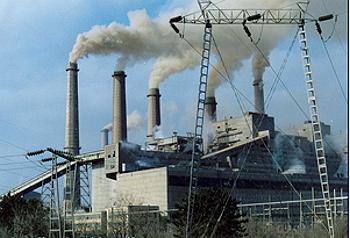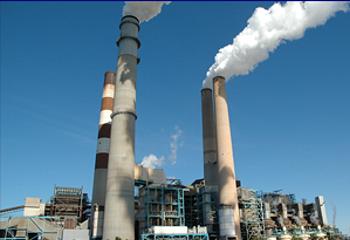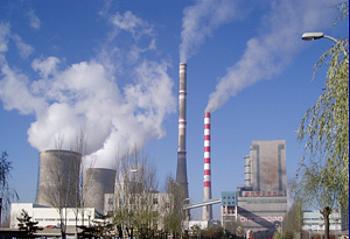Irreversible Climate Change Looms Within Five Years
LONDON, UK, November 9, 2011 (ENS) – Unless there is a “bold change of policy direction,” the world will lock itself into an insecure, inefficient and high-carbon energy system, the International Energy Agency warned at the launch of its 2011 World Energy Outlook today in London.
The report says there is still time to act, but despite steps in the right direction the door of opportunity is closing.
The agency’s warning comes at a critical time in international climate change negotiations, as governments prepare for the annual UN climate summit in Durban, South Africa, from November 28.
 |
The Korp Elektroenergjetike coal-fired power plant in Kosovo (Photo courtesy EPS) |
“If we do not have an international agreement whose effect is put in place by 2017, then the door will be closed forever,” IEA Chief Economist Fatih Birol warned today.
“Growth, prosperity and rising population will inevitably push up energy needs over the coming decades. But we cannot continue to rely on insecure and environmentally unsustainable uses of energy,” said IEA Executive Director Maria van der Hoeven.
“Governments need to introduce stronger measures to drive investment in efficient and low-carbon technologies,” she said.
“The Fukushima nuclear accident, the turmoil in parts of the Middle East and North Africa and a sharp rebound in energy demand in 2010 which pushed CO2 emissions to a record high, highlight the urgency and the scale of the challenge,” van der Hoeven said.
Some key trends are pointing in worrying directions, the agency told reporters today. CO2 emissions have rebounded to a record high, the energy efficiency of global economy worsened for second straight year and spending on oil imports is near record highs.
 |
Tampa Electric Company’s coal-burning Big Bend power plant in Florida (Photo credit unknown) |
In the World Energy Outlook’s central New Policies Scenario, which assumes that recent government commitments are implemented in a cautious manner, primary energy demand increases by one-third between 2010 and 2035, with 90 percent of the growth in non-OECD economies.
In the New Policies Scenario, cumulative carbon dioxide emissions over the next 25 years amount to three-quarters of the total from the past 110 years, leading to a long-term average temperature rise of 3.5 degrees C.
“Were the new policies not implemented, we are on an even more dangerous track, to an increase of six degrees C.
The IEA projects that China will consolidate its position as the world’s largest energy consumer. It consumes nearly 70 percent more energy than the United States by 2035, even though, by then, per capita demand in China is still less than half the level in the United States.
The share of fossil fuels in global primary energy consumption falls from around 81 percent today to 75 percent in 2035.
 |
Coal-fired power generating station in Shanxi, China. (Photo courtesy Skoda Export) |
Renewables increase from 13 percent of the mix today to 18 percent in 2035; the growth in renewables is underpinned by subsidies that rise from $64 billion in 2010 to $250 billion in 2035, support that in some cases cannot be taken for granted in this age of fiscal austerity.
By contrast, subsidies for fossil fuels amounted to $409 billion in 2010.
“As each year passes without clear signals to drive investment in clean energy, the “lock-in” of high-carbon infrastructure is making it harder and more expensive to meet our energy security and climate goals,” said Birol.
The World Energy Outlook also presents a 450 Scenario, which traces an energy path consistent with meeting the globally agreed goal of limiting the temperature rise to two degrees Celsuis above pre-industrial levels.
Four-fifths of the total energy-related CO2 emissions permitted to 2035 in the 450 Scenario are already locked in by existing capital stock, including power stations, buildings and factories, the report finds.
Without further action by 2017, the energy-related infrastructure then in place would generate all the CO2 emissions allowed in the 450 Scenario up to 2035.
“Delaying action is a false economy,” Birol warned, saying that for every $1 of investment in cleaner technology that is avoided in the power sector before 2020, an additional $4.30 would need to be spent after 2020 to compensate for the increased emissions.
Copyright Environment News Service (ENS) 2011. All rights reserved.
